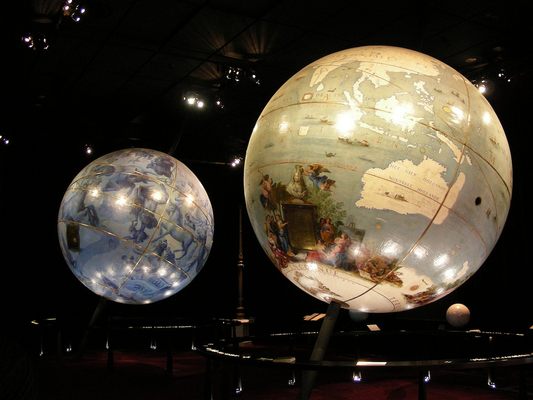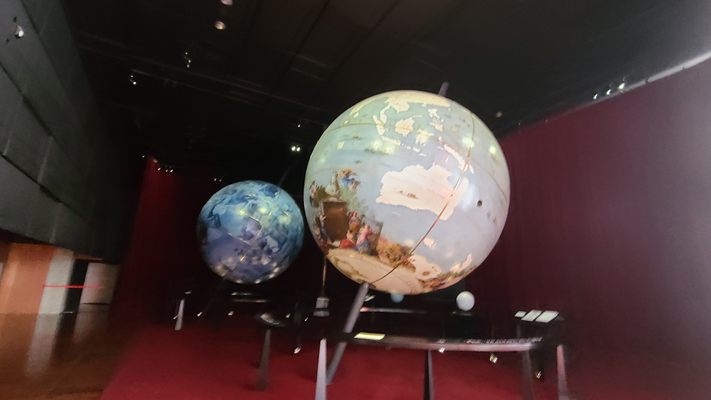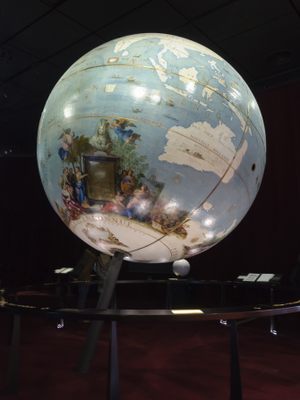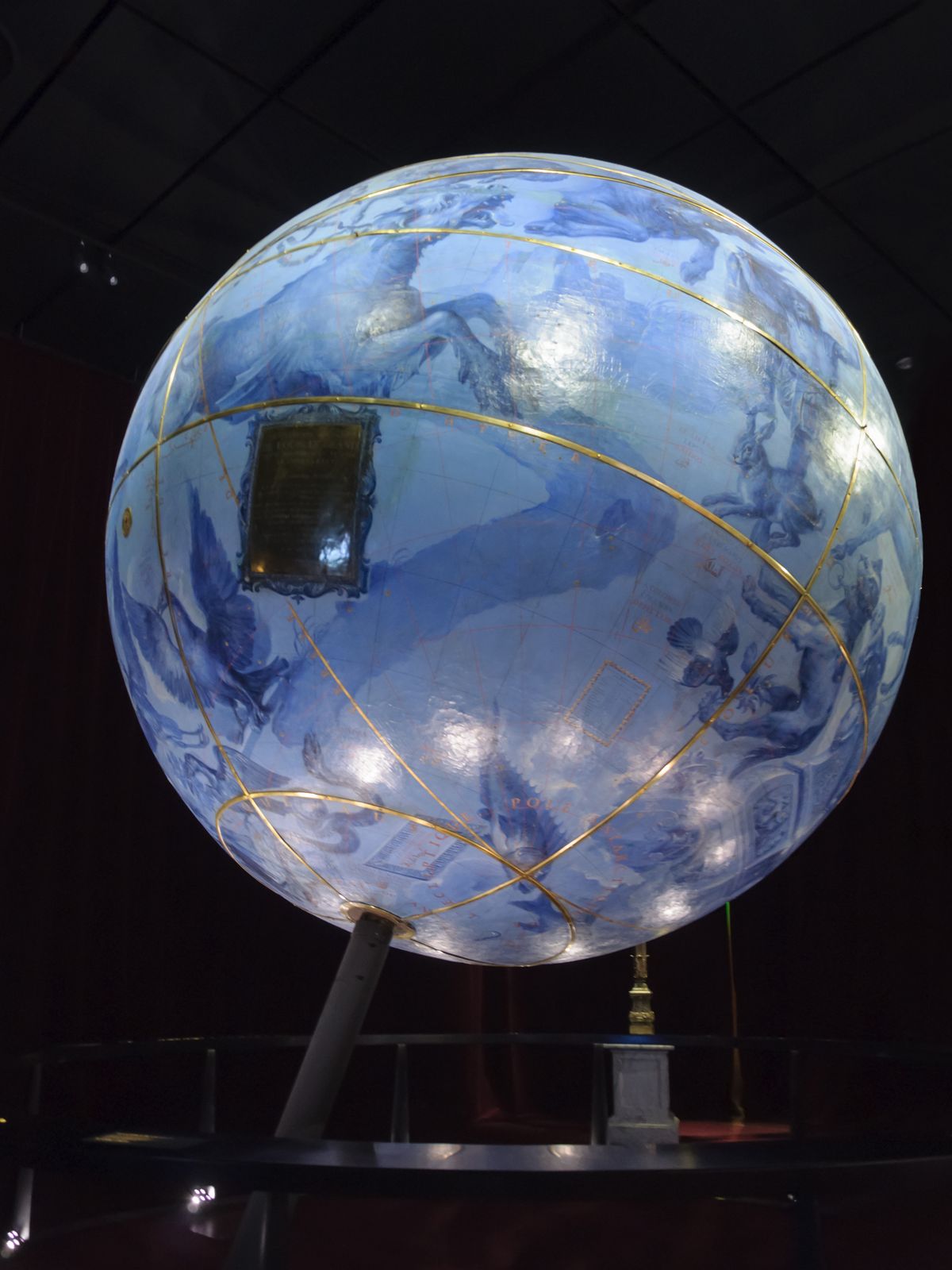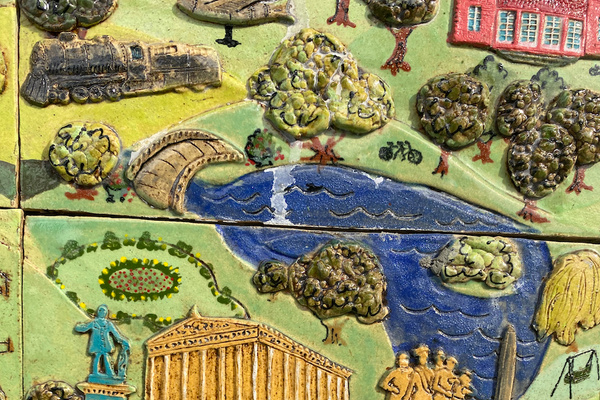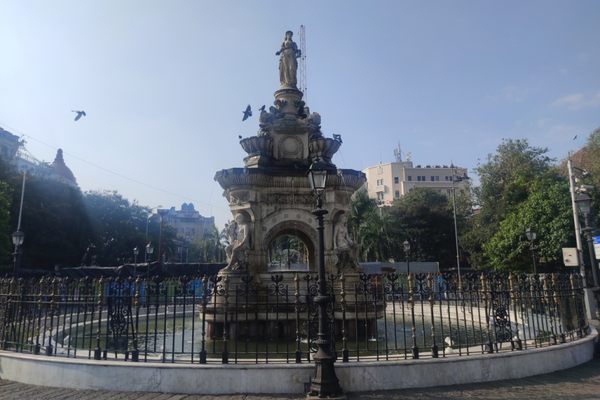About
Turn into a dark corner in the Bibliothèque nationale de France and you might be shocked to find two massive baroque globes dangling from the ceiling.
The 20-foot spheres were commissioned by King Louis XIV, France's Sun King, in 1681. During his 72-year reign (the longest in European history, dubbed the "Grand Century") the monarch presided over a golden age of art and literature in France, and established the country as a leading power in Europe.
Louis XIV commissioned the spheres after seeing the globes that belonged to his friend, the Duke of Parma. They instantly became a sensation, perceived as a symbol of the French monarchy's ownership of the world. Italian cartographer Vincenzo Coronelli delicately crafted his globes from thin strips of wood, fine fabric, and plaster, which incredibly have survived up till today. The spheres lived at Versailles—a former hunting lodge which Louis XIV transformed into a lavish palace—until the French Revolution, after which they were moved from place to place before finally settling at the historic library, where they are among the most popular attractions on display.
One globe depicts the cosmos with astrological constellations. The stars are arranged as they would have appeared at the date of Louis XIV's birth in September of 1638. It places the Earth at the center of the solar system, a widely accepted theory at the time. The second globe depicts the continents of the Earth with exotic illustrations of the people who live across the world. These were intended to provide encyclopedic information about whalers in the Pacific, tribesmen in Africa, cannibals in Brazil (from the accounts of Amerigo Vespucci), among others. It serves as a literal manifestation of Louis XIV's worldview and provides an image of how we believed the world looked in the 1680s.
Coronelli drew the maps using various ships' logs. As such, for all its impressiveness, there are some inaccuracies on the globe: California is an island, and the mouth of the Mississippi River is in completely the wrong location. "Terra Australis" was uncharted territory, and Europeans had no idea what was there. Although Coronelli could draw the world, it wasn't yet possible to grasp it in its entirety. Nevertheless, the globes remain just as impressive as they were the day they were finished 400 years ago.
Related Tags
Know Before You Go
The globes are in a gallery at the end of the hallway to the right after going through security. No library pass is needed to access them.
Community Contributors
Added By
Published
December 7, 2016
